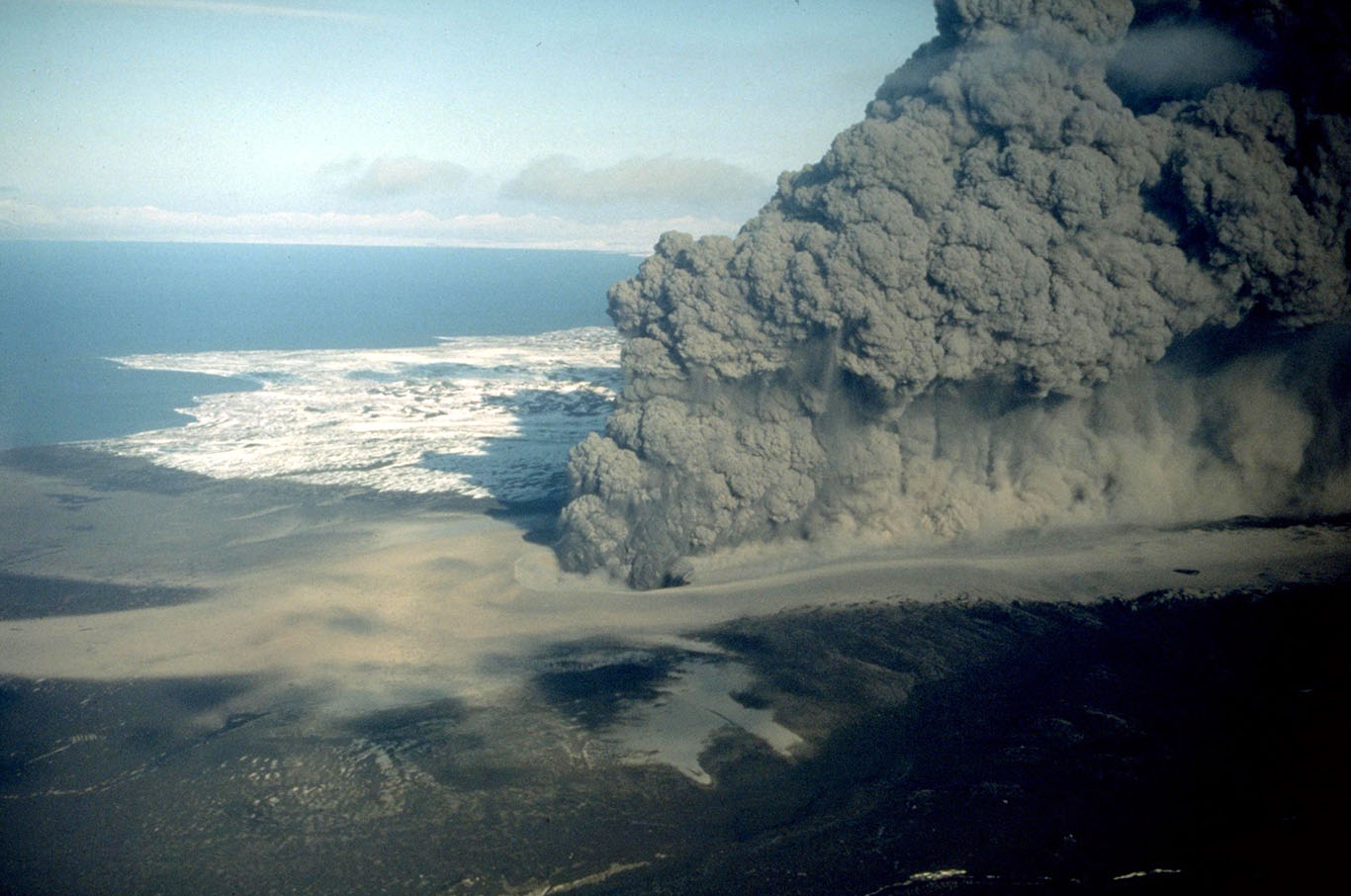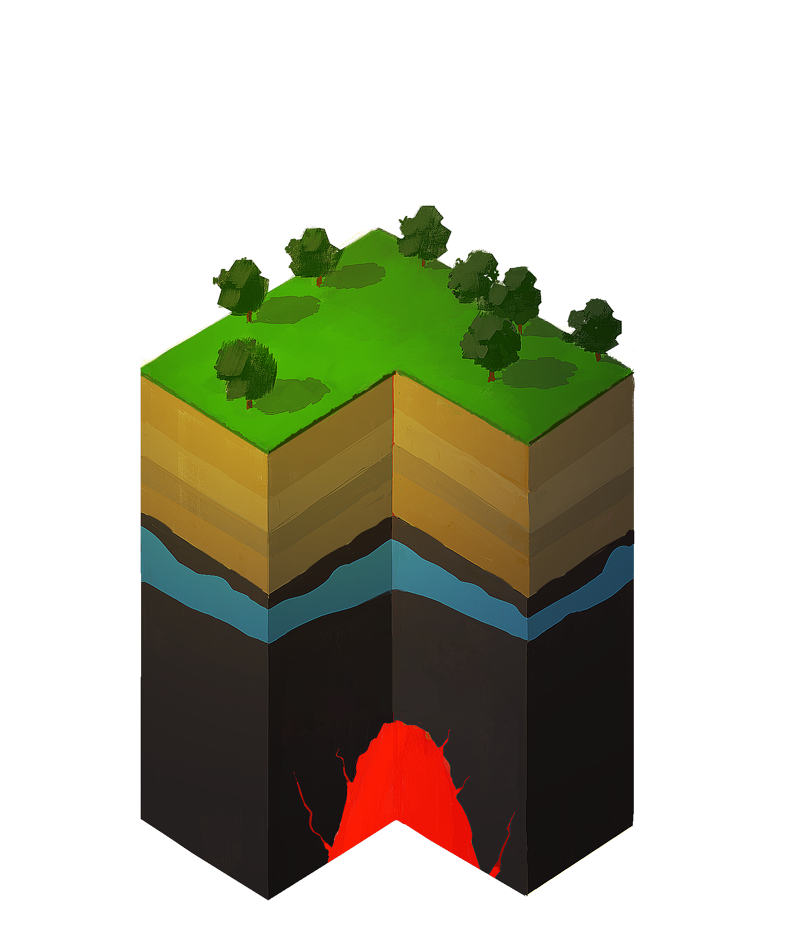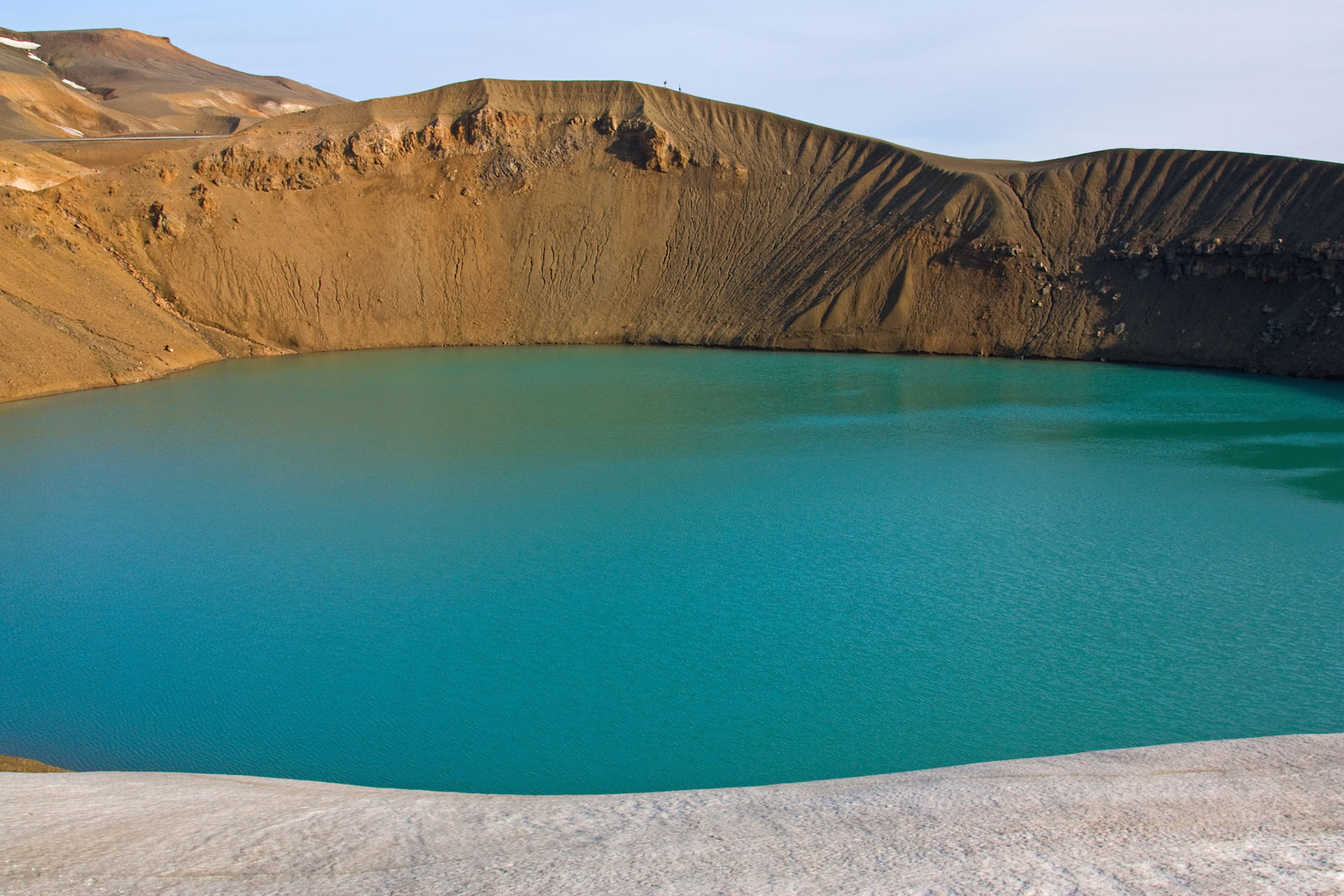One of the best ways to study a maar volcano eruption is to recreate it in lab experiments or through computer simulations. These experiments and simulations allow the scientists to model an eruption, make predictions, and most importantly, safely observe a maar-like eruption.
Models can be large or small, and may use different types of material. For example, one group of geologists studied maars by setting up a simulation that you could fit on your lab bench. They filled a glass case with small pieces of rock and colored beads, and caused an explosion using compressed gas. When the rock and beads finally settled, the beads helped the scientists see how the explosion moved material. Another group of scientists set up a model at a larger scale. They buried explosives under layers of asphalt, sand, and gravel and filmed the explosion.
The scientists were able to observe how much energy was in the explosion. The energy in an eruption is closely linked to how much damage it can cause. What the scientists learn about the power and damage of maar volcano eruptions can help people who live where maar volcanoes may erupt.
Unexpected, dangerous, and fleeting, maar volcanoes still remain a partial mystery to geologists. Thankfully, experiments and simulations allow the scientific community to keep exploring why and how maar volcanoes erupt.







